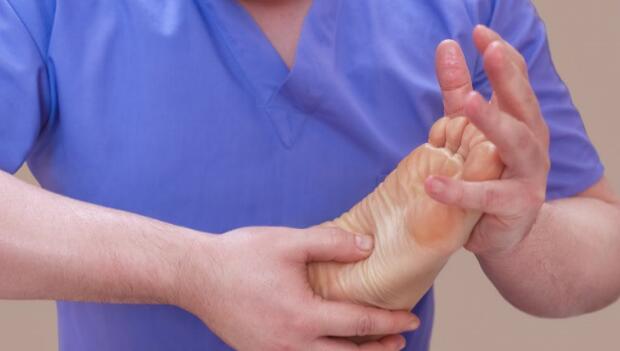
There are a few things in this world I wouldn't wish on my worst enemy. Plantar fasciitis is one of them. This debilitating and annoyingly persistent injury can happen to anyone, and is particularly common among runners. I've had my bouts with it, and while home remedies can provide some relief, improving your running technique is your best defense. Practicing the Chi Running Form Focuses will put you on the path to injury prevention and recovery.
Where is the Plantar tendon and what does it do?
The plantar tendon runs the length of the bottom of your foot, spanning the area from the base of the toes to the front of your heel. The two ends of the tendon attach at the base of the toes and at the front of the heel bone by means of fascia, a strong fibrous membrane. The plantar tendon keeps the arch of the foot from flattening completely when the foot bears weight, thus providing cushioning and shock absorption when you're walking, running or standing. This tendon also allows you to point your toes.
What is Plantar Fasciitis and what causes it?
Plantar fasciitis is an inflammation of the plantar fascia caused by any motion of the legs that creates a pull on the Plantar tendon. Walking or running up or down hills, climbing stairs, walking or running on your toes (including wearing high heels), or dorsiflexing (pointing your toes up as your heel comes down with each stride) all pull the plantar tendon.Plantar fasciitis can also be caused by heel striking, which is usually a result of over-striding. If you reach forward with your legs with each stride, you're very likely to land on your heels. Landing in this way can create a force on your heels of up to six times your body weight with each footstep.
Tight calves and an inflexible Achilles tendon can also pull the plantar tendon and weaken the attachment of the fascia to the bone. If the plantar tendon is stretched beyond what the fascia is capable of holding, the fascia forms micro-tears and begins to pull away from the bone, causing inflammation.
When the plantar tendon is consistently over-stretched, the body begins to add calcium where the attachment between the tendon and the heel bone takes place. Over time, enough calcium is added to build more bone mass in that particular spot, creating a heel spur that can be even more painful than plantar fasciitis.
Other common causes of plantar fasciitis include:
- Wearing inflexible or worn out shoes
- Very low or high arches
- Being overweight
- Spending long hours on your feet
- Tight calf muscles or tight/stiff ankle muscles
- Walking barefoot in soft sand for long distances
What does plantar fasciitis feel like?
It varies for everyone, but plantar fasciitis usually follows this progression. When it first appears, you may feel like you've got a lump in the heel of your sock. Not pain, just an uncomfortable "thick" feeling right under your heel.
In the early stages, your heel may feel tender when you first get up from sitting or when getting out of bed in the morning, but the discomfort subsides once you're up and about on your feet. As the injury advances, tenderness lingers and begins to feel like needles sticking you in the bottom of your heel with each step. In the very advanced stages, you find yourself searching the Internet for books on levitation. It aches all day, not only when you're on your feet.
- 1
- of
- 2
Get ACTIVE on the Go


Couch to 5K®
The best way to get new runners off the couch and across the finish line of their first 5K.
Available for iOS | Android








Discuss This Article